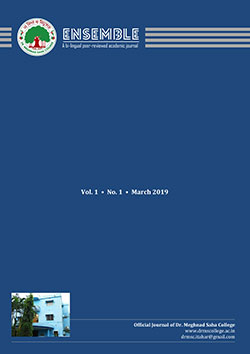Revisiting The Methodological Development In Soil Erosion Research
ABSTRACT
Soil erosion (by water) is a major land degradation process that may threat the Sustainable Development Goals (SDG) by its negative impact on environment and human well-being. Soil erosion research demands scientific methods, tools and techniques to assess soil erosion with more accuracy and reliability. Soil erosion research has had experienced crude field-based techniques in early twentieth century to model-based approaches since the 1970s and very recent machine learning and artificial intelligence models to predict soil erosion susceptibility and risk. The paper aims to review the trend in methodological development in soil erosion by water through time. The brief background of different approaches, their relative advantages and disadvantages are reviewed. Depending on the time of establishment and wide application the approaches are classified and represented as erosion plot/runoff approach, erosion pin technique followed by environmental tracer method and model approach in combination with Remote Sensing (RS) and Geographic Information System (GIS). Recent advancement in artificial intelligence and application of statistical techniques have a great potential to contribute in soil erosion research by identifying various degrees of susceptibility in large scale and also to quantify the erosion rate with high accuracy.The Remote sensing (RS) and Geographic Information System (GIS) contribute to develop regional scale data base with exploration of real time data and spatial analysis. The combination of RS & GIS and process-based models must be more effective than the traditional soil erosion model in the context of prediction with greater reliability and validity. The future research on soil erosion is better to focus on the theoretical analysis and development of erosion prediction model with more quantitative refinement and to model the future.
Keywords: Erosion, Runoff Plot, Environmental tracer, RS & GIS, Artificial intelligence
https://doi.org/10.37948/ensemble-2020-0202-a016
Views: 2577



